Occupational Safety Training for Working on Inland Waterways
99,000 ₫
Note: The above price is calculated for one person, the price may fluctuate depending on the number of trainees participating in the course and the dynamics of the market. For more accurate price support, please refer to the quotation table or contact our consulting staff directly.
The Safety training course when working on inland waterways is a course that provides occupational safety knowledge for Group 3. The course will raise awareness for trainees about accident prevention during work on inland waterways. Accordingly, the occupational safety training content is closely aligned with Article 18 Decree 44/2016/ND-CP.
Table of Contents
Toggle1. Overview of inland waterways work
a. Inland waterways occupations
Inland waterways occupations are a comprehensive field of jobs related to activities on inland waterways, including cargo transportation, tourism and recreation, service provision, and infrastructure-related work. Inland waterways operations require good organization and management to ensure safety and operational efficiency. Inland waterways occupations also provide many job opportunities for people with experience and skills in this field. There are many inland waterways occupations, including:
- Ship captain/vice-captain: Manage and operate vessels on inland waterways.

- Sailor: Use equipment to communicate and operate the ship.
- Electrical/mechanical engineer: Manage and maintain electrical equipment and infrastructure on board.
- Cargo handling staff: Responsible for receiving and delivering goods on ships and at docks.
- Ship repair worker: Repair and maintain equipment on ships.
- Business/advertising staff: Promote and sell products and services on board.
- Port infrastructure staff: Manage and maintain infrastructure equipment at the port.

b. Types of inland waterways transportation vehicles
Inland waterways transportation vehicles are an important part of the inland waterways traffic infrastructure. They allow cargo transportation, tourism, and service provision on inland waterways. The use of inland waterways transportation vehicles has many benefits, including shortening routes, reducing transportation costs, easing environmental pressure, and providing facilities for tourism and recreation on inland waterways.
However, the use of inland waterways transportation vehicles also has some limitations, including requiring good organization and management, safety issues, and dependency on weather conditions and water depth. There are many types of inland waterways transportation vehicles, including:
- Ships and boats: The main means of moving and transporting goods on inland waterways.
- Ferry: A type of vehicle that moves based on the buoyancy of inland waterways or other water currents.

- Cargo ships: Ships designed for transporting goods on inland waterways.

- Tourist ships: Ships used for tourism and recreational purposes on inland waterways.

- Port ships: Ships used to transport goods and people from one port to another.

- Police ships: Ships used to monitor and control activities on inland waterways.

2. Overview of safety training for working on inland waterways
a. What is safety training for working on inland waterways?
- Safety training for working on inland waterways consists of lessons that provide awareness of how to prevent occupational accidents for workers. Accordingly, people working directly on inland waterways are those classified in group 3.
- The occupational safety training course will help workers recognize and avoid hazards, reducing risks of workplace accidents while working.
REGISTER FOR OCCUPATIONAL SAFETY TRAINING SERVICE
b. Training duration
- Initial safety training duration
- Total training time is at least 24 hours, including examination time.
- 8 hours of theoretical study on the system of policies and laws on occupational safety and hygiene.
- 8 hours of theoretical study on basic knowledge of occupational safety and hygiene.
- 4 hours of theoretical study on specialized training content.
- 2 hours of practice on specialized training content.
- 2 hours of theoretical examination to conclude the training course.
The safety training center will divide the time into several sessions depending on the arrangement of study schedules for employees. Typically, there will be 6 training sessions, the course will take place over 3 days, provided that the manufacturing enterprise arranges continuous learning time.
- Periodic safety training duration
- Before the occupational safety card expires, if workers want renewal, they must undergo periodic occupational safety training, with periodic training duration equal to at least 50% of the initial training duration.
Explanation: The total periodic occupational safety training duration is at least 12 hours, including examination time. After completing the periodic training and passing the test, workers will be reissued or have their occupational safety card extended.
c. Training content
| No. | TRAINING CONTENT | TRAINING DURATION (HOURS) | |||
| Total | Including | ||||
| Theory | Practice | Examination | |||
| I | System of policies and laws on occupational safety and hygiene | 8 | 8 | 0 | 0 |
| 1 | Overview of the system of legal documents on occupational safety and hygiene. | 6 | 6 | ||
| 2 | System of standards and technical regulations on occupational safety and hygiene. | 1 | 1 | ||
| 3 | Specific regulations of state management agencies on occupational safety and hygiene when constructing, expanding, or renovating facilities for manufacturing, using, storing, preserving, and inspecting machines, equipment, materials, and substances that require strict safety and hygiene requirements. | 1 | 1 | ||
| II | Basic knowledge of occupational safety and hygiene | 8 | 8 | 0 | 0 |
| 1 | Basic knowledge of hazardous and harmful factors in the workplace. | 4 | 4 | ||
| 2 | Methods to improve working conditions. | 1 | 1 | ||
| 3 | Safety culture in manufacturing and business. | 1 | 1 | ||
| 4 | Rights and obligations of employers and employees; policies and regimes on occupational safety and hygiene for employees; functions and tasks of the safety and hygiene network. | 1 | 1 | ||
| 5 | Rules on occupational safety and hygiene, safety signs, occupational hygiene instructions, and use of safety equipment, personal protective equipment; skills in first aid for occupational accidents and prevention of occupational diseases. | 1 | 1 | ||
| III | Specialized training content | 6 | 4 | 2 | 0 |
| General knowledge of machines, equipment, and substances that generate hazardous factors; analysis, evaluation, and risk management of occupational safety and hygiene; safe working procedures with machines, equipment, and substances that require strict occupational safety and hygiene. | 6 | 4 | 2 | ||
| IV | Examination of training content at the end of the training course | 2 | 2 | 0 | 0 |
| Total | 24 | 22 | 2 | ||
See more training content of 6 groups
d. Occupational safety training certificate
- After completing the occupational safety training course and passing the examination, workers will be issued with an occupational safety card (commonly referred to as occupational safety certificate group 3).
- The occupational safety card clearly shows information such as: full name, date of birth, job, and specific working environment. It also includes the training period, red seal, and signature confirming completion of the training course.
- According to the regulations on issuing safety cards stated in Clause 2 Article 24 Decree 44/2016/ND-CP, it is divided into 2 cases:
- In cases where the employer and the employee have a labor contract, the employer must sign, seal, and stamp across pages on the safety card for group 3 trained employees after completing the course from the safety training unit and passing the examination.
- In cases where workers are freelancers, seasonal, or without a labor contract, the training unit must sign, seal, and stamp across pages on the safety card for the workers after completing the training from the occupational safety training unit and passing the examination.

3. Identifying hazards when working on inland waterways
Working on inland waterways can involve risks and dangers, therefore workers on inland waterways need to be well-prepared and comply with safety regulations to minimize risks. Some of these hazards include:
- Water currents: River currents can cause safety issues when strong or when there are natural disasters such as floods or lightning.
- Fire and explosion: Ships on rivers may face risks of fire and explosion due to the use of oil and fuel.
- Congestion: Ships may be obstructed in narrow areas or bridges on rivers.
- Machinery failure: Equipment on ships may fail and cause danger to operators and passengers.
- Bad weather: Bad weather can cause many safety problems when working on inland waterways, including high waves, storms, and tornadoes.
- Hazards from aquatic or marine creatures such as crocodiles or sharks…
- Activities on inland waterways can cause workers to be infected with diseases due to polluted or toxic water environments.

We need good organization and management to minimize hazards when working on inland waterways.
4. Safety measures for working on inland waterways
Safety measures for working on inland waterways include:
- Comply with safety regulations: Workers on inland waterways must comply with safety regulations regarding property, equipment, and work practices.
- Be well-prepared for work: Workers on inland waterways need to be well-prepared in knowledge, skills, and equipped with safety devices.
- Use protective equipment: Use protective equipment such as life vests, helmets, and support tools.
- Focus on work: Workers on inland waterways must focus on their tasks to avoid mistakes.
- Be ready for emergencies: Workers on inland waterways must have plans and measures for emergency situations.
- Safety training: Workers on inland waterways must undergo occupational safety training to know how to prevent and handle dangerous situations.
- Periodically organize occupational environment monitoring in factories and enterprises, collect and analyze harmful factors for workers, and then adjust to reduce hazards to prevent occupational diseases for them.

5. Accidents when working on inland waterways
In work on inland waterways, several accidents may occur including:
- Ship sinking: due to ship capsizing or loss of propulsion.
- Ship traffic accidents: when ships have trouble maneuvering or collide with other ships.
- Environmental accidents: due to solid waste or toxic substances discharged into inland waterways.
- Weather-related accidents: due to heavy rain or strong winds.
- Earthquake-related accidents: such as tsunamis or large whirlpools.
- Health-related accidents: due to long working hours or harsh working environments.
- Accidents from using transport means: due to lack of experience or improper practice.

Few people were alert to the dangers of the ferry trip across Chau Doc 3 Pagoda, but there were still moments that caused panic. Early that morning, a passenger boat had just left the station in the middle of the river, about 60 meters from Long Binh Ward Pagoda, when it collided with a container transport barge traveling from Ho Chi Minh City to Dong Nai. The collision caused the boat to sink into the river, creating surprise and panic for those onboard. Shouts for help were heard within Thu Duc City.

That morning, an unfortunate accident occurred at the construction site of My Thuan 2 Bridge, on the bank of Vinh Long Province. During the construction process, three workers fell into Tien River, with one worker unable to swim and swept away missing. Police and rescue forces searched for 2 days and 2 nights and eventually found the victim’s body on the afternoon of 02/10/2022, about 6km from the accident site. This tragic event reminds us of the importance of occupational safety and the need to ensure a safe working environment for workers.
6. Benefits of occupational safety cards when working on inland waterways
An Toan Nam Viet provides businesses with excellent benefits after completing occupational safety training courses as regulated in Decree 44/2016/ND – CP on occupational safety and hygiene, for companies, factories, and enterprises.
- Workers can recognize potential risks of occupational accidents and take preventive measures to avoid them.
- Enterprises can establish risk prevention measures in manufacturing, operation, and maintenance processes.
- Minimize costs when safety risks occur in labor.
- Uninterrupted manufacturing processes help increase labor productivity and product quality.
- Comply with occupational safety laws, avoiding legal risks.
- Create prestige and professionalism in all aspects, thereby elevating the enterprise’s brand.
The training courses of Nam Viet are the solution to prevent and combat external factors affecting individuals so they can avoid dangers that may lead to injuries or, more seriously, death.
REGISTER FOR OCCUPATIONAL SAFETY TRAINING SERVICES
7. Customer feedback after completing the training course
An Toan Nam Viet has gone through many years of experience in the mission of accompanying many businesses in Vietnam in general and in the southern provinces in particular. And that responsibility for Nam Viet is something extremely valuable, therefore the occupational safety training of Nam Viet is always increasingly professional. The driving force for An Toan Nam Viet to grow strongly until now comes from both positive feedback and suggestions from businesses. Below is the feedback from partners we have served.
See more customer interviews after using the service of An Toan Nam Viet
8. Capacity of occupational safety training of An Toan Nam Viet
An Toan Nam Viet is a reputable and high-quality occupational safety training center in Vietnam today. With occupational safety training sessions continuously taking place at manufacturing workshops, factories, or construction sites across the country (63 provinces and cities in Vietnam).
REGISTER FOR OCCUPATIONAL SAFETY TRAINING SERVICES
- Occupational safety training license
- An Toan Nam Viet has been inspected and granted a certificate of eligibility for occupational safety and hygiene training activities by the Department of Occupational Safety of the Ministry of Labor – Invalids and Social Affairs. This further strengthens our capacity in occupational safety training.

- Documents and lectures
- Before occupational safety training documents are included in the occupational safety training courses, they are reviewed and approved to ensure accuracy of knowledge and effectiveness when applied.
- The teaching methods of instructors are standardized according to the teaching standards of An Toan Nam Viet, which are methods studied and summarized by experts in occupational safety training to bring the highest learning effectiveness for trainees.
- Facilities
- Controlling factors in classrooms affecting the training process will increase teaching efficiency and learning effectiveness of trainees.
- Training support facilities are always arranged with spacious classrooms meeting standards of area, lighting, training equipment, etc.
9. Prestigious and quality occupational safety training center nationwide
- At An Toan Nam Viet, we always put our professional dedication to occupational safety training as the top priority. For us, imparting self-protection knowledge to workers so that they can be safe in their working journey is contributing to the development of the country.
- To ensure effective training, we carefully and meticulously prepare every detail, from teaching tools, equipment, documents, to sound and lighting.
- Our occupational safety training instructors are experts with many years of experience in the field. They even have research works on identifying hazards in all industries and how to prevent them.
- The lectures of instructors are drawn from practice and conveyed vividly and understandably to workers. These factors help workers feel comfortable during learning and absorb knowledge effectively. Of course, the knowledge taught always adheres to Decree 44/2016/ND-CP.
- From there, workers grasp many measures to prevent hazards and protect themselves, and also apply them appropriately in their actual work.
- Our occupational safety training center is proud to provide reputable and professional occupational safety training services with the following advantages:
- Competitive training costs while maintaining quality.
- Flexible training schedules in line with enterprise production activities.
- Quick occupational safety training certification procedures, in accordance with the law.
- Instructors with many years of experience in the profession.
- Classrooms are controlled for factors affecting the training process to improve teaching efficiency and learning effectiveness.
- Lectures are tailored to occupational safety practices at enterprises.
- An Toan Nam Viet works professionally and dedicatedly to support customers accurately and quickly.

10. Additional reference materials for occupational safety training
- Inland waterways safety training documents
- Occupational safety training document set group 3
- Occupational safety training test group 3
11. Occupational Safety Training Activities
- Viglacera Van Hai Joint Stock Company
- Inland Waterways Maintenance Management Joint Stock Company No. 15
- Wan Hai Vietnam Company Limited
- ProQC Vietnam Inspection Company Limited
2 reviews for Occupational Safety Training for Working on Inland Waterways
No comments yet

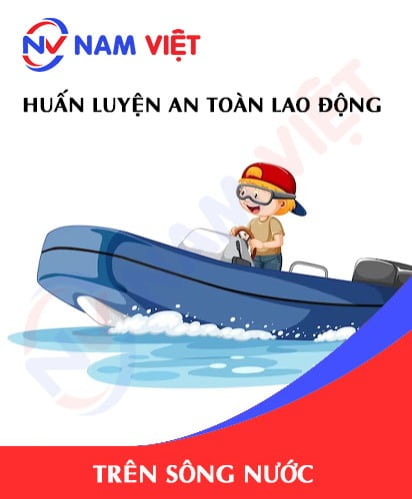
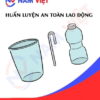
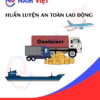
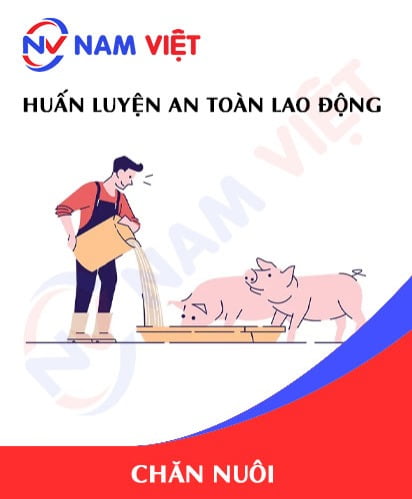
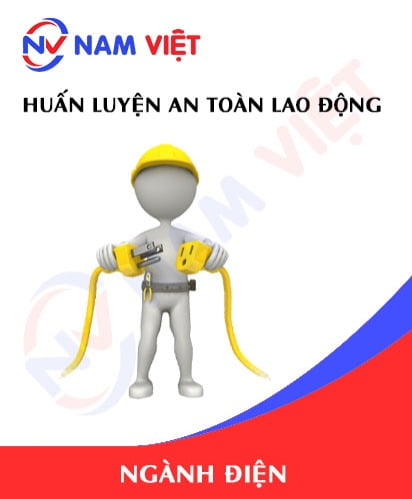
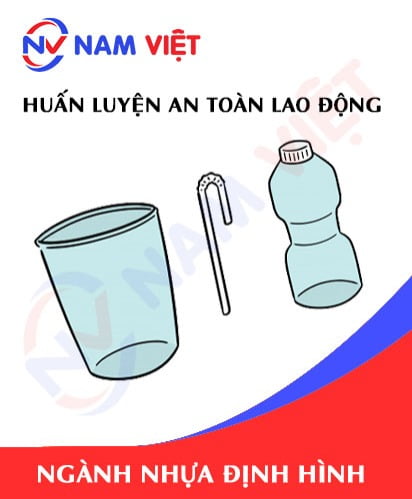
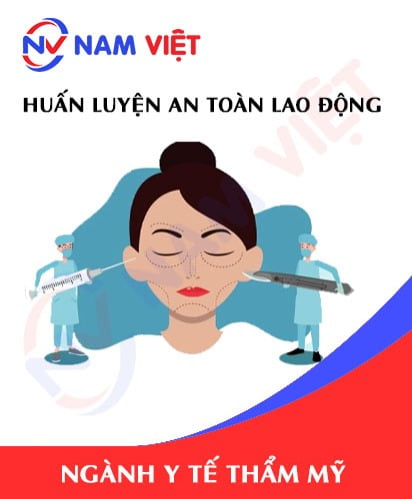
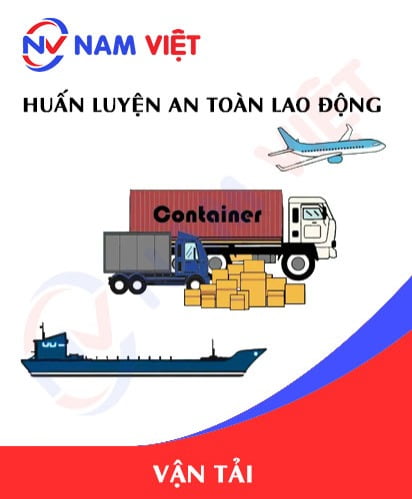
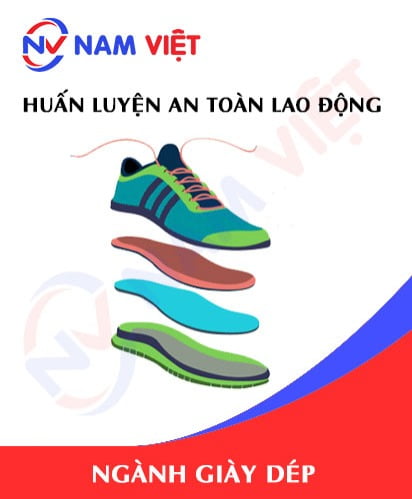
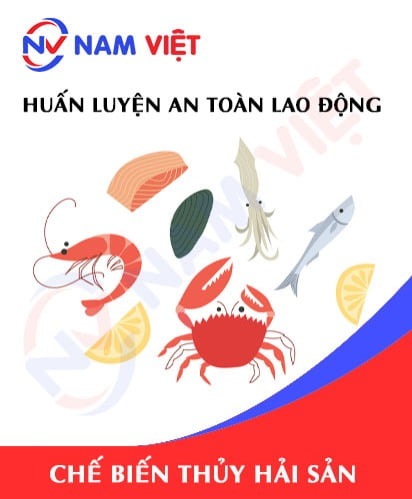
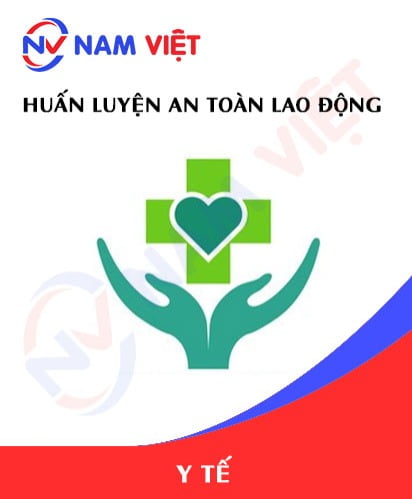
huynhtran_dathien22
Sự đóng góp tích cự của Nam Việt cho an toàn lao động tại Việt Nam là không thể chối cãi. An Toàn Nam Việt đã trao món quà về sức khỏe lao động cho công nhân của chúng tôi, để họ có thể bảo vệ bản thân mình. Thay mặt Anh/Chị/Em công nhân, tôi gửi lời cảm ơn đến công ty Nam Việt rất nhiều.
aimy_huynh_animo
Tư vấn rất sâu sắc, giúp tôi giải quyết những khó khăn về chuyên môn trong lĩnh vực huấn luyện an toàn.